February/March 2011
Tiger on the Move
Wandering through Portugal and Western Spain
It’s mid-March, and we’ve been back in Europe for almost a month. We hit the ground running; got all our junk off the plane in Lisbon, took a taxi back to the Tiger in Vila Franca, spent a couple of days getting ourselves put together again, and hit the road. We’re now approaching the Moroccan border, chomping at the bit to cross into northern Africa. Demonstrations are planned for Sunday, March 20, so our plan is to take the ferry from Spain on Monday, assuming nothing startling has occurred over the weekend.
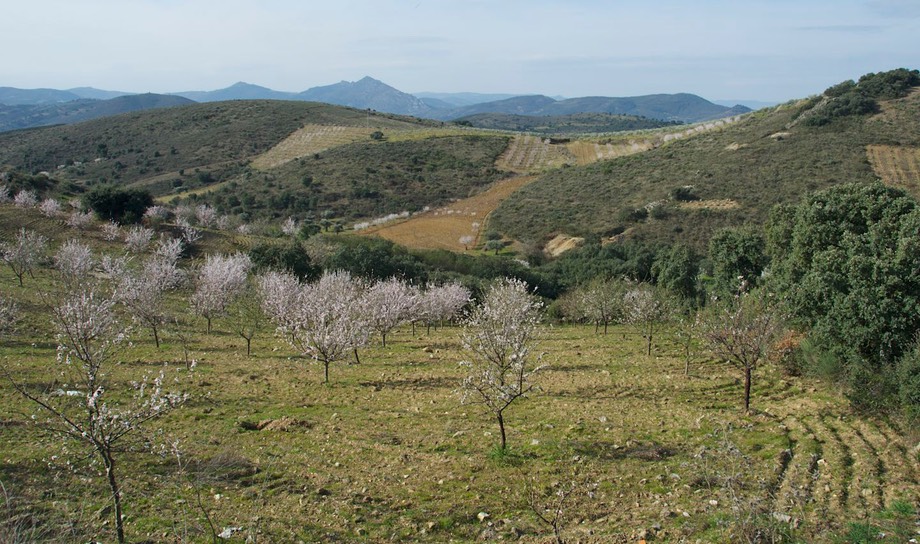
We arrived back in Portugal to almost two weeks of perfect weather: sunshine, warm days and pleasant nights; after that it has turned somewhat colder and rainier, and so we have been dodging raindrops and turning the heater on at night. But we’ve had adventures galore.
We left Vila Franca headed northeast. We had decided to continue our zigzag through the countryside, working toward the northern border with Spain. Immediately we were back in the tight little towns, crossing bridges almost wide enough for us, and counting cork trees. We had re-entered our personal Twilight Zone: we have two maps, a guidebook with maps, and a GPS – none of which agree on where we are and which road to take! Ain’t it great!
The first change we noticed since we’d left in December was that ripe oranges, lemons and tangerines are rampant. Some still on the trees (and often available for the picking), but piles of it beside the road, as well as in the stores, and all of it dirt cheap. I can buy navel oranges for about 45 cents/lb American. And there are strawberries, too. And… all those storks we told you about last fall? The nests are full, and there are storks absolutely everywhere! Things are definitely looking up.
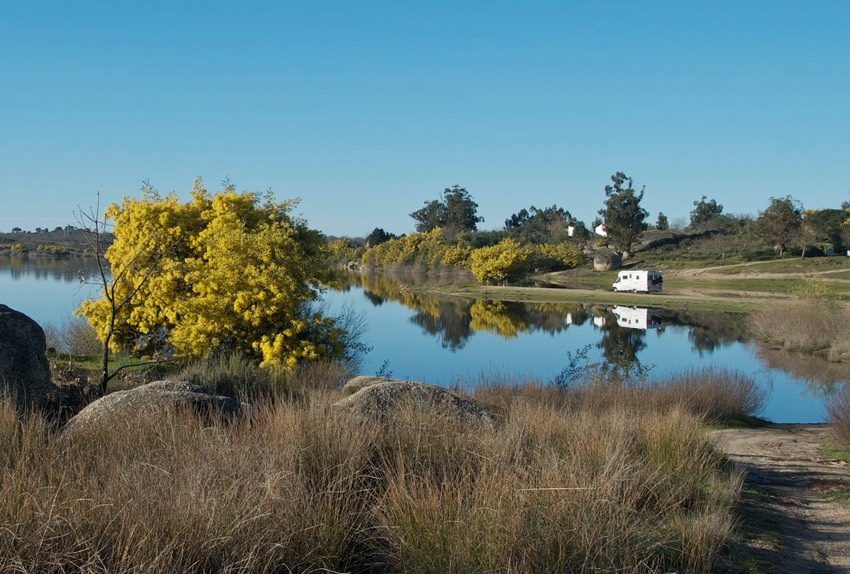
On this leg of our adventures, we have wound our way through and around several small towns along the Rió Tejo, which flows from western Spain out to the sea at Lisbon. There are several dams (barragems) in this area, and they make great overnight spots. There are more rigs on the roads, probably European travelers heading home? We see them in the Aires, but also they enjoy camping beside the dams. At one site we ran into an interesting couple from Wales, and ended up making plans to visit them at their home when we return to Britain. They winter down here, no surprise; but earn their keep by working the craft fairs the rest of the year. Another way to be independent and see the world.
Along the eastern edge of Portugal we enjoyed high ridges and cool temperatures, along with enormous outcroppings of granite rocks among the pine and eucalyptus trees. In addition to granite, this was a schist mining area, and several towns are very quiet these years, with mining ended. The further north you get, and the further you get from the western coast and the larger cities, the more you feel you’ve stepped back in time. This is the Portugal we’ve come to love; we find ourselves sharing the country roads with horse-drawn carts and cattle being moved from one field to another. We feel very much at home; we’ve enjoyed these same sights in country after country in the Americas.
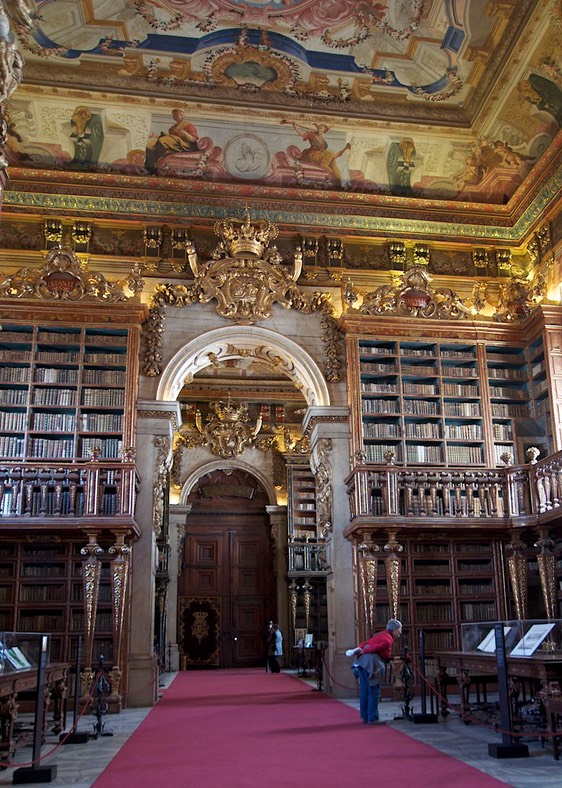
We’ve really enjoyed rural northern Portugal: tiny towns with fortresses towering above; every city with its castle and cathedral. Acres of port wine grapes getting ready to bud out; mountains and valleys, including the highest peaks in the country in the Torre area of the Serra da Estrela, where we passed skiers on the slopes.
A highlight was the ancient university town of Coimbra. Built on a hill, of course, we wandered up and down and took a zillion pictures. The university featured an amazing baroque library and the area was full of students, including a couple of fellows in long black capes trying to raise money for their college’s float in the 1st of May parade and celebrations. We also spent time at Conímbriga, the ruins of the ancient Roman city south of Coimbra itself. It was pretty cool, and had terrific mosaics and a nice museum.
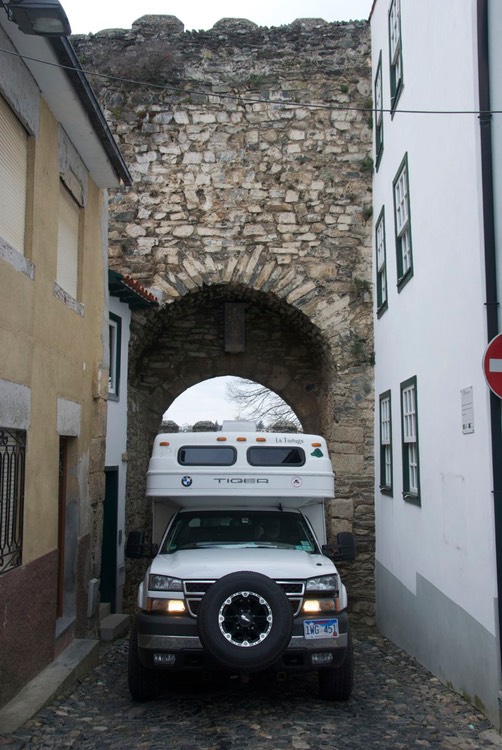
One of our destination towns was Caramulo, a pretty little spa town up in the mountains in the middle of a pine and eucalyptus forest. It just happened to have a very nice automotive museum. We were able to spend the night in their parking lot, so Rick got to groove on the classic cars as long as he wished. It was up a terrific twisty road and is really a nice town. Cool. Go to www.motor-museums.com to see pictures of the museum.
If a town doesn’t have a cathedral or a castle or an honest-to-God fortress, at least it has a viaduct. So everywhere we went we saw Roman remains, or medieval remains, or Renaissance…or Gothic…or, but you get the point. Portugal is absolutely full of fun stuff to see. The people are nice, the views are great; what’s not to like? We were happy campers, picking up where we had left off and delighted to be back.
The weekend before the beginning of Lent was definitely Carnival time in southern Europe, and Portugal was doing its part. The kids were in costume (we thought they’d confused it with Halloween) for days, towns were having fiestas, folks were out and about just about everywhere. It was quite a scene, and we weren’t even near the big cities! A happy time.
We ended up in Bragança, in the far northeastern corner of the country, on the day before Ash Wednesday. We were there for the huge walled old city. We managed (just) to get through the entry arch and climb up to the top of the town, where we found few people and lots of parking, oddly enough. Asking around, we found out that it was a holiday (Shrove Tuesday? who knew?); thus the big ole citadel was closed for the day, but there was a pretty church, an interesting 5-sided Roman civic building, and they were burning a huge pile of wood in the center of the square; we decided they were making ash for the next morning’s religious activities. It was a charming, evocative spot, and we spent the night just below the walls of the fortress; we were pleased.
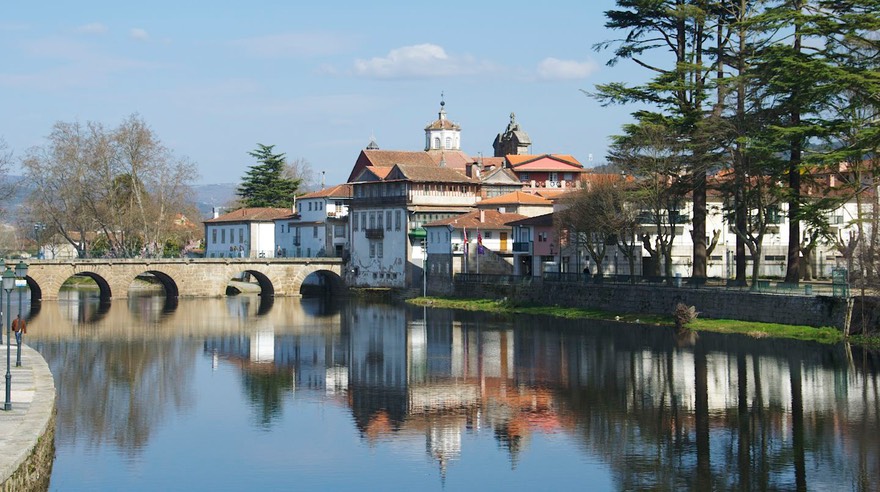
We worked our way west for a bit along the northern edge of the country. This is a big almond-producing area, and the trees were in full bloom. Definitely spring. We stopped in Chaves (CHA-veth in these parts), with: nice town, nice Roman bridge, nice castle keep. But it was beginning to look just a little bit like more of the same to us. So? Maybe time for Spain and Morocco?
Why not? We took a tiny little road through the mountains of NP Peneda-Gerês, crossed the border into Spain, and (having fallen off the GPS) found ourselves in this pipsqueak of a village named Randím. Oh, oh, we thought we were goners. This teeny village had the narrowest teeny streets, with the widest buildings, we had ever seen. Inch by inch we crept along, folding in rearview mirrors, holding our breath, being watched by NOT-curious, NOT-helpful locals, as we simply hoped we wouldn’t have to back our way out of there. Ultimately we turned a final corner and the road opened up into countryside again; we heaved a sigh of relief and were on our way.
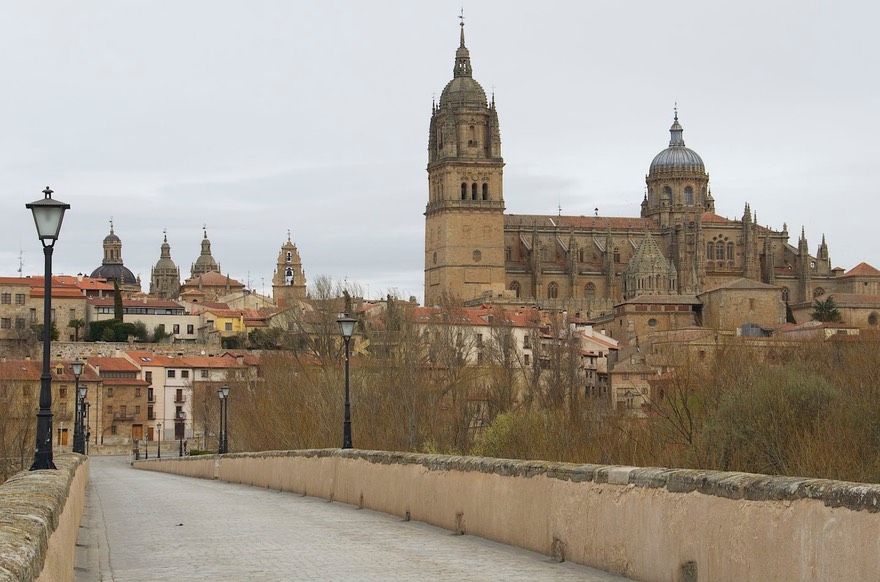
Our “way” – by intention – was to move quickly down the Spanish side of that country’s border with Portugal. It worked out quite well. The countryside isn’t all that terrific, but there are several interesting cities to visit. We enjoyed them thoroughly. Salamanca, Cáceres, Trujillo – all lovely ancient cities with interesting walled old towns containing cathedrals and towers and statues of explorers galore. Salamanca was a real highlight and, among other things, had a nice little auto museum. You’ll find photos at www.motor-museums.com.
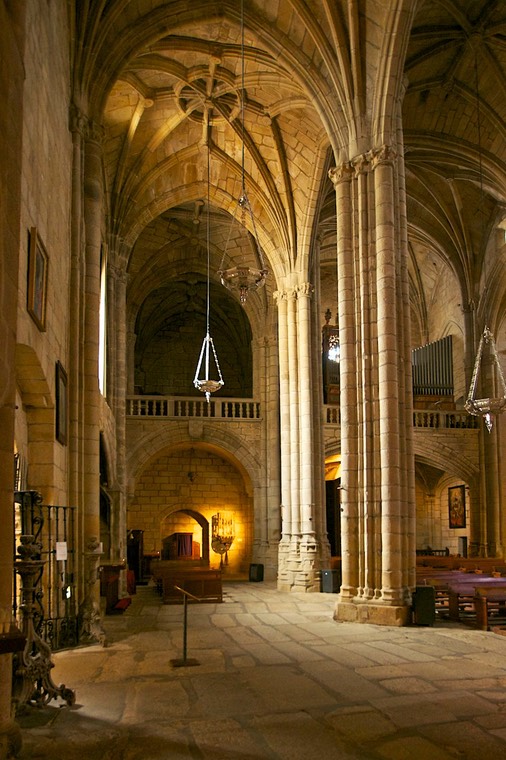
Interestingly, several of the primary Spanish conquistadors who (choose one) -- “Discovered” or “Decimated” -- much of the “New World” were born in this area. Men such as Hernán Cortés and Francisco Pizarro, along with many of the men who went with them, returned here with their accumulated wealth and helped establish the fine homes and churches that mark the towns. We attempted to stop in Mérida, which has the most complete surviving Roman theatre in all the Roman Empire. However, it was: closed for the next several hours, they wanted a lot of money to go in and see it, and we were ready for Morocco. So… perhaps another time. We remembered that Mérida, Mexico had been a similarly less-than-perfect experience. Hmmm.
By this time we were approaching Sevilla, our last great city to see in this time frame. You might remember that we had tried in the fall, but couldn’t find a place to park ourselves. This time we had new information from which to work.
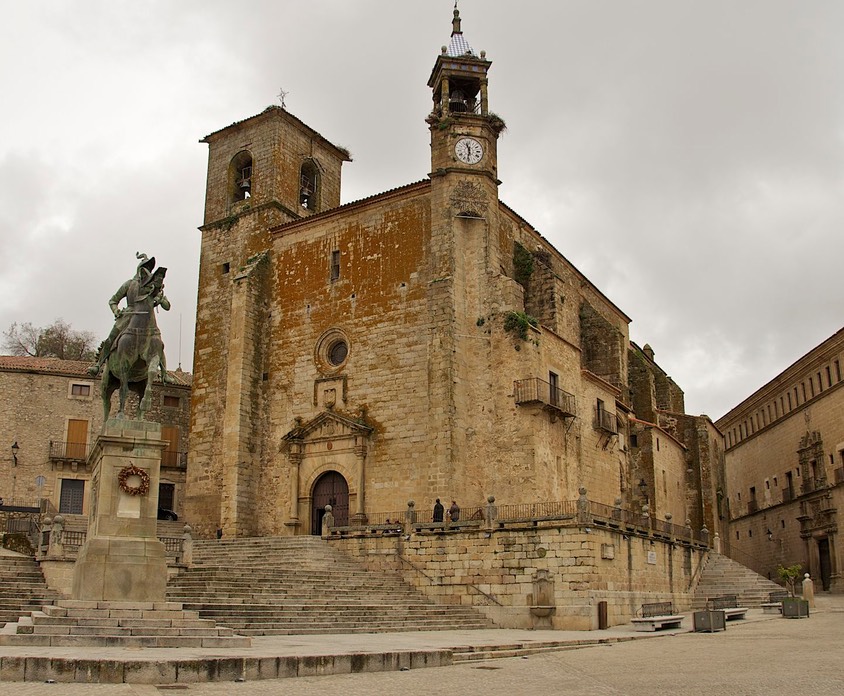
However, first we were able to connect up with a couple of Americans who have been living in Europe for the last zillion years, Joel and Cindy Scott. By a fluke we were all in the same neck of the woods, and through the miracles of (even though lousy) internet, were able to be in the same place at the same time. We spent a couple of lovely days chatting away a mile a minute, comparing notes on everything we could think of; we exchanged some movies; we traded an extra water thief for a set of grips that holds open the pushy thing for the water that sure would come in handy down the road. Finally we waved good-by and made tentative plans to try and meet up in Turkey in the fall.
So, Sevilla. Well, no. Didn’t happen. At least one half of this couple said “Morocco! Now! Sevilla will still be there when we come back.” Getting total agreement, we ducked back into Portugal for a couple of days to get decent internet, in part so that we could send you this message, and have now headed for the border.
We are very excited, and everyone we’ve spoken to says we should have a wonderful time in northern Africa. We’ve been warned against entering the Rif Mountains area, with its hashish around every corner, and to be aware of some unrest in the cities; but that the mountains and deserts will be spectacular and that Kathy will get to ride a camel at last! We promise to mind our manners and to let you all know how it goes. Stay tuned!
Rick, Kathy and our intrepid Tiger, on the move again
PS: We celebrated La Tortuga’s fourth birthday this month. She’s taken us 99,000 miles through 27 countries so far with hardly a hiccup... just like old Aesop said she would.
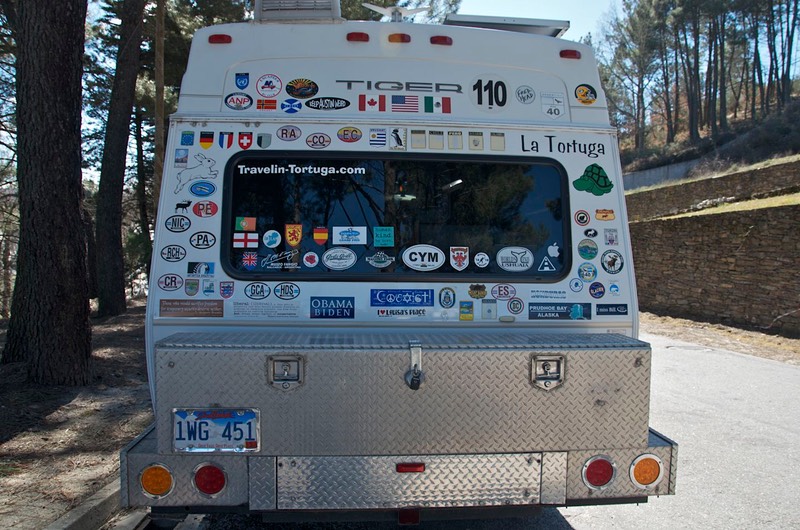
Click to see more photos from Portugal and Spain